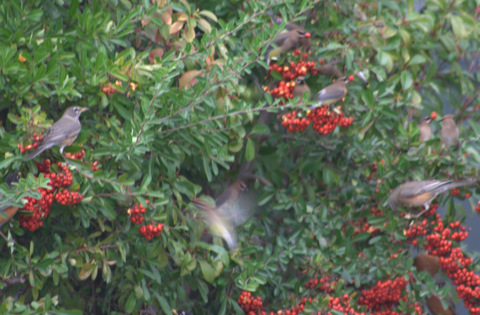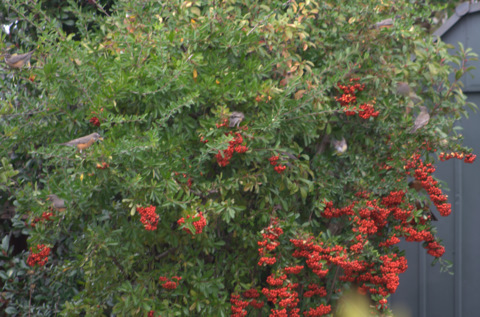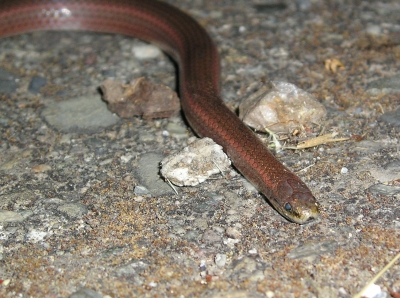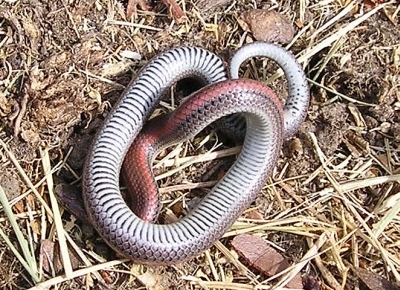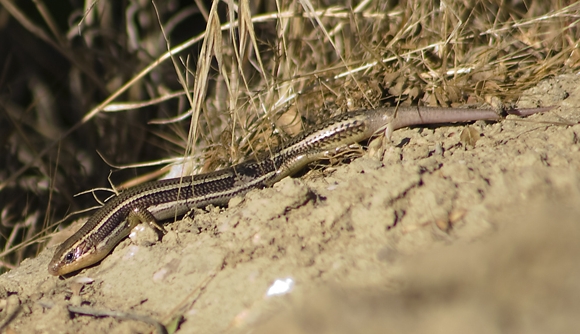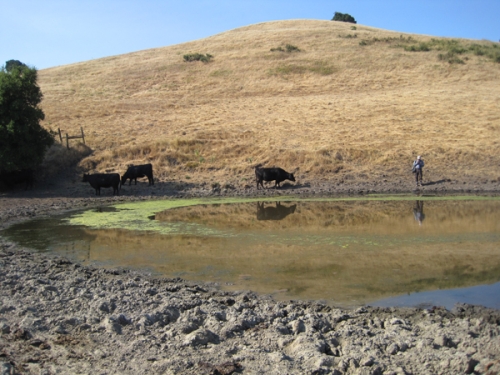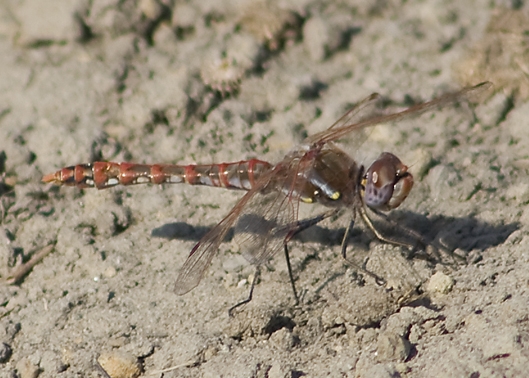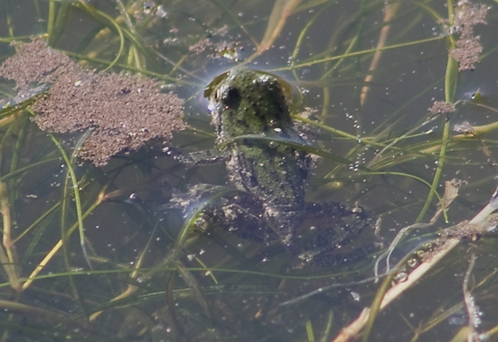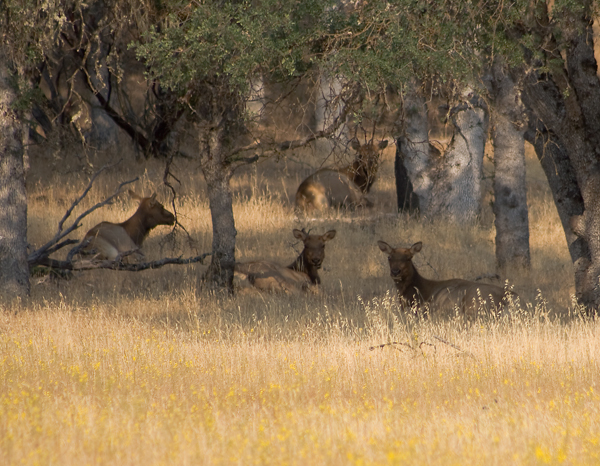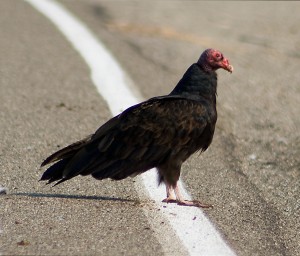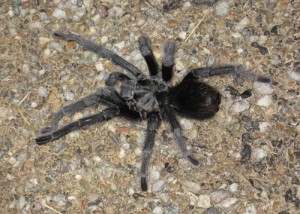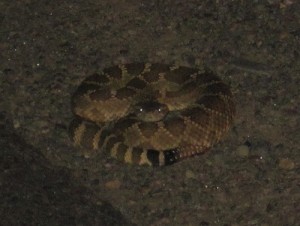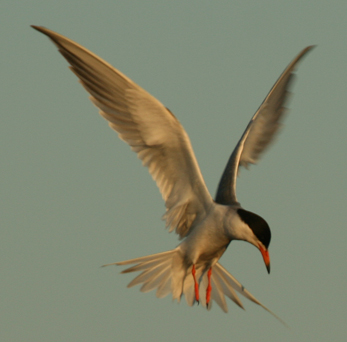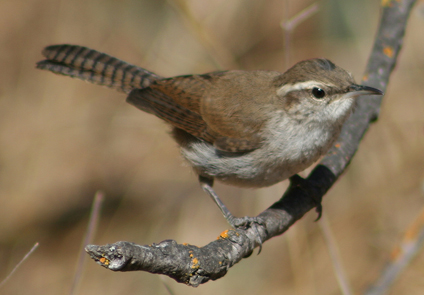On Tuesday morning, I drove to Morgan Territory Regional Park for a hike hoping to see some of the general wildlife of the area. Morgan Territory exhibits classic East Bay habitat and there are no parking fees.
For most of the time, I hiked along Volvon Trail. The trail was very easy to walk on and provided wide views of the beautiful surroundings. A couple times, the trees would open up to stunning views of Mount Diablo.
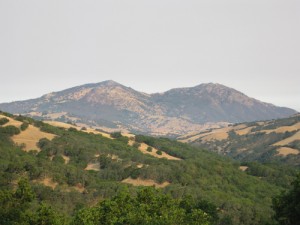
Mount Diablo from Morgan Territory
The soft, sandy earth on the trail was excellent for seeing footprints. The occasional animal footprint would be mixed in between both dog and human footprints; I identified Puma, Raccoon, and Deer prints. For the greater part of my hike, these prints were the only evidence of animal activity – everything else was very quiet. Still, the scenery and vegetation made for a wonderful morning walk.
Towards the end, however, things started picking up. As I was nearing the last quarter mile before the trail head, I heard a slow, consistent rustling in the grass off of the side of the trail. I knew this was a snake. The only other small creature which makes such a noise in the grass is a lizard, however lizards produce short bursts of rustling – not slow and constant. I peeked a little bit closer and realized it was a Western Rattlesnake. It is extremely important to be careful around rattlesnakes and give them their space so as to not disturb them. I was fairly close to this one, however it was calm and not rattling. It merely waited in the grass to the side of the trail until it determined I was not a threat. I was standing perfectly still, and so it decided to continue on its way, gracefully crossing the trail and going off on the other side.

Western Rattlesnake at Morgan Territory
Rattlesnakes are beautiful animals and aren’t dangerous if we, as humans, are smart about how we act around them. They are fairly common and widespread in these East Bay hills, so encounters are relatively frequent. Many rattlesnakes are killed. Again, smart actions on our part could avoid both rattlesnake and human misfortune.
I continued on the trail and came to a pond. As I approached the pond, I heard several loud “plops” near the water’s edge. These “plops” turned out to be California Red-legged Frogs jumping into the water from the banks.
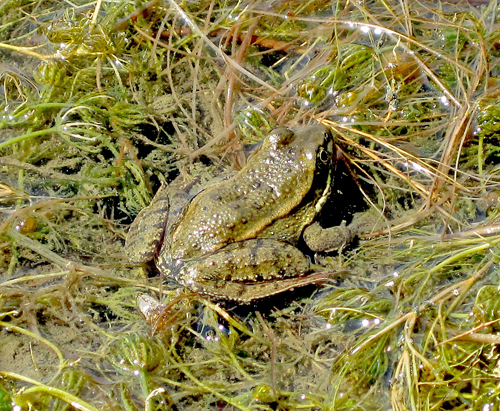
California Red-legged Frog at Morgan Territory
As I was watching the frogs, a Coyote came out of the woods on the far side of the pond. The Coyote leisurely poked around several California Ground Squirrel holes that were on the hillside, and didn’t notice me, allowing me to take some nice pictures. It even tried digging into a hole to get at a squirrel, but failed.
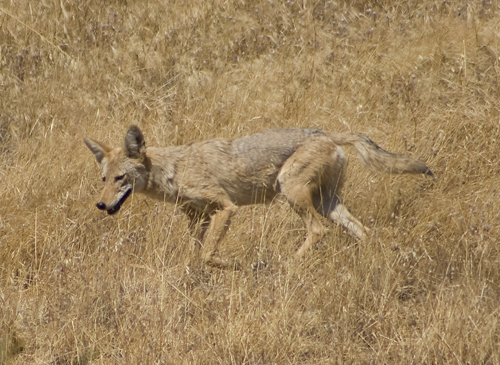
Coyote at Morgan Territory
As I turned back to looking at the frogs in the pond after the Coyote, I noticed an Aquatic Garter Snake swimming in the pond. As I got nearer though, it disappeared under the water, topping off the wonderful animal sightings I had on this day. Overall, I felt quite lucky to have seen 2 species of snakes, Red-legged Frogs, and a Coyote all within the period of an hour.
